Today I'm going to bring a review telling a little about the game's history and how to play, so you can embark on this kind of amazing game, which brings socialization, quick thinking, and the best part, provides a lot of fun for everyone. And for our first Board Game, we have Munchkin!
History
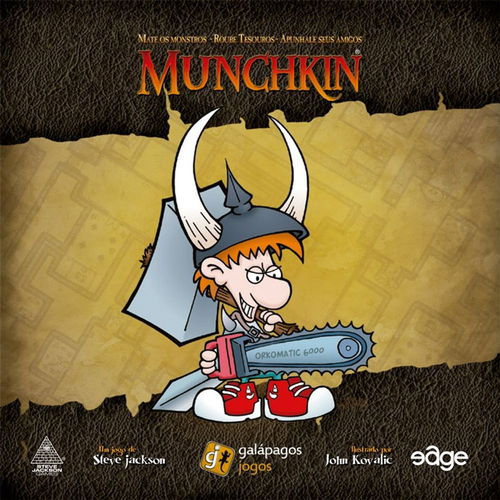
Munchkin was created by the game designer Steve Jackson, who among other games also created the well-known G.U.R.P.S., 80's RPG system that was created to set any type of adventure of any theme.
In the early 2000s, RPG stagnated, going back to the 1980s with D&D dominating the market and the tables, and Steve Jackson then decided to create a game that brought together all the clichés of table RPGs that existed to date, where you could go to a dungeon, defeat monsters, accumulate treasure and even stab other players and loot their treasure.
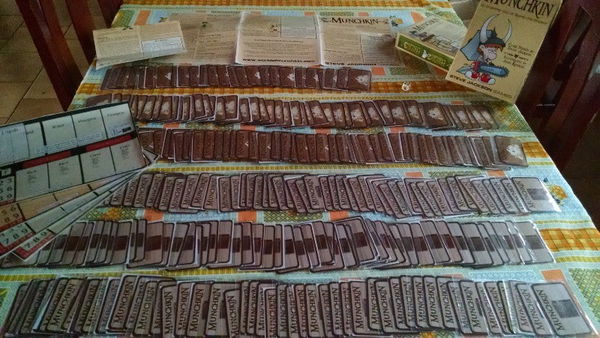
In 2001, Munchkin was published by Devir, which distributed most of the card game and RPG-related material at the time. In 2010 a revision was made in the game, as many expansions had already been released, and with this high number of releases, some rules started to get confusing and get a little out of the general concept of the game. With this review, the standard rules were defined, simplifying some actions.
Munchkin has a huge history with a lot of versions. You can find the 2010 Edition here, we recomend starting with it.
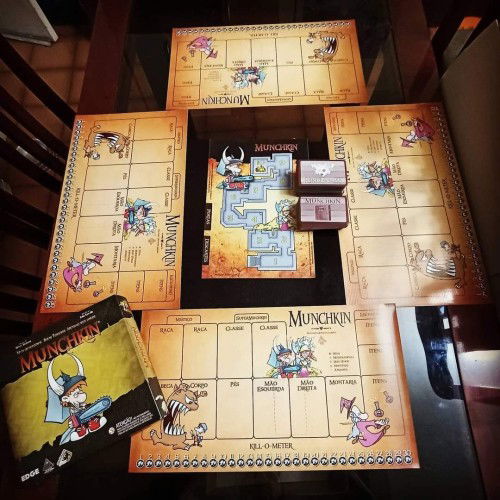
The Game
The game, in a basic way, starts with all players going to a dungeon, and in it each player will go through several challenges, can help or hinder other players, depending on their will. Inside this dungeon, you'll face monsters, and collect as much treasure as possible; as the game progresses, each player will level up according to their performance, and the one who makes their character evolve to level 10 first wins.
In Munchkin, there are two types of cards, which can be identified by the illustration on the back, they are Doors and Treasures.
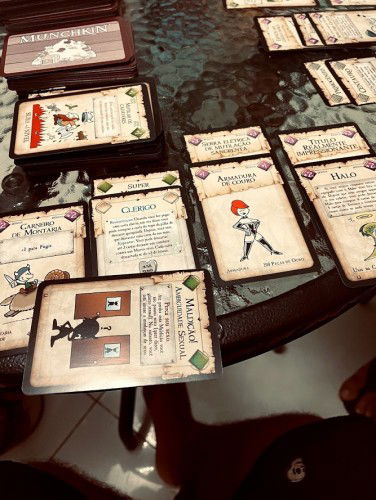
The cards are shuffled, separated into treasure and door piles, placed in two piles, then each player draws four Treasure cards and four Door cards. This is one of the changes made in the 2010 revision, as previously there were only two cards from each pile to be drawn.
Important: The back of Munchkin's cards may have a slightly different coloration, as is the case with the cards of the first edition and the 2010 edition.
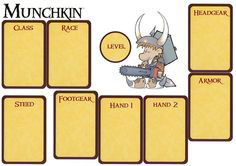
It's not a problem; if the shuffling is done correctly and randomly, nothing prevents the game from being played.
Each player's Character
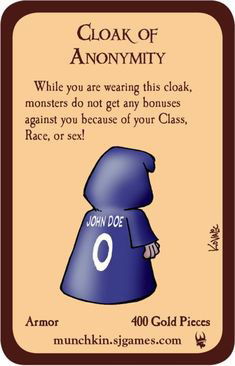
To start the game, you need to define the character, starting with gender, if it is male or female, and this is decided by who is playing. This fact may change during the game depending on the effects of other players' cards and actions. That's the only initial choice.
When starting out, all players have neither race nor class, basically just human. In the basic game, there are 3 races: Elves, Dwarves and Halflings, and also 3 classes, Mage, Cleric and Thief. If a race or class card come into your starting hand, you can now drop it into the battlefield, thus becoming the race or class identified on the card.
General Rules
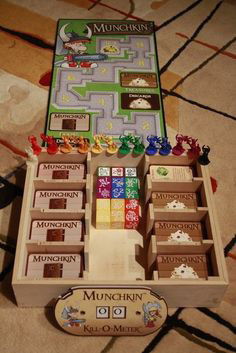
The cards in your hand represent nothing, but are protected against theft from other players.
To be valid in the game, the card must be on the field, so the player must play it.
The field has some areas where players can place their equipment, including:
- On the head (Helm);
- In the body (Armor);
- On the feet (Boots);
- In the hands (Swords, shields and other items).
In the hands, one or two pieces of equipment can be placed, as indicated in the item itself.
- The player can carry as many items as they want, such as potions, torches, among others, but there is an exception to this rule, as they may have written large on the card, in which case, the player can play only one of these items.
- When carrying many items, as long as it is not large, such as a helmet or boots, if you are already equipped with an item in the same area, this item can still be carried, but in the backpack, and identifying that it is in the backpack leaving it the card turned over.
Playing Munchkin
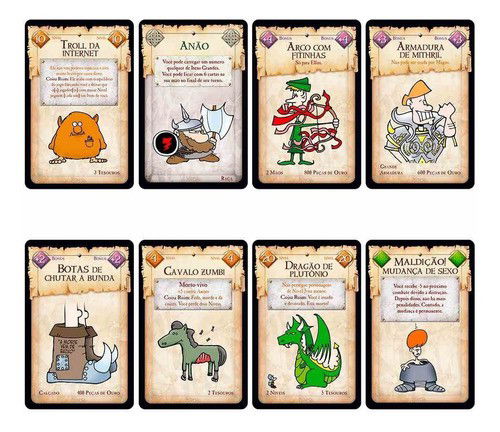
Munchkin is separated into rounds, in which players take turns. In each turn, the player in turn makes a sequence of moves, which are as follows in the list below:
1. Character Preparation: In this phase, all the cards the player has in their hand, can be played according to the restriction of each one, as in the case of large items. You will be able to alternate the items and equipment that are on the character and in his backpack, identifying them by "standing" (equipped or in the hands) and "tapped" (in the backpack).
After an item is put into play, the player can only dispose of it by selling to level up, discarding to make a card's ability in play, or if a card's effect allows it.
Remember that race and class cards can be played and collected at any time during the game.
2. Kick a door: Here the player takes a card from the draw pile, and then reveals it to everyone at the table. From this action, two things can happen: the first is a monster being revealed. If this happens, the player enters combat with that monster, and will not be able to make any actions or changes on their game board.
Entering the Combat: When entering combat, the player must observe the monster's level and carefully read the text of the card, for any abilities and effects, according to race and class.
For the combat, if for example a creature is level 6, the player will need to have Strength 7 or more. To define this strength, it is usually the level at which the player is, added with the equipment and items they have that is, if its strength is 1, according to his level, it adds up what increases its power, such as armor, helmet, among others.
There's something essential, which makes Munchkin even more fun: other players can interfere in your combat with cards that have SINGLE USE, thus modifying your character or monster's stats, including the active player, to improve their character. Another thing that improves the game and makes it more fun is that opponents can play a card called Wandering Monster or monster from your hand, to help the monster that someone else is fighting, to hinder the player.
The last detail is that you can ask other players for help in battles by offering treasures that are the result of the loot made when you defeat the monster. When you beat the monster, you level up; but if a player helped, that player doesn't level up, so the treasure proposal for help must be excellent.
If you have won the fight, you will draw from the Treasure pile a number of cards equal to the number in the lower corner of the defeated monster's card. If no one helped you, your treasure goes to the hand and is not revealed to anyone. If you got help from a player, the treasure should be shown to everyone.
Important: if you win a battle, you go up one level.
If a player loses the fight, the player can run away, and for that, the player rolls a 6-sided die, if they roll 5 or 6, they run away, any other number below, they suffer a bad thing from the monster you lost.
One of the bad things about monsters is death, meaning your character can die!
When this happens, it's like you restart your game, losing all equipment and items, keeping only the classes and curses. You will be respawned at the start of the next player's turn. But before respawning, other players can loot your corpse. Each player can draw one of the cards you had, starting with the one with the highest level. At the start of your next turn, you draw 4 doors and 4 treasures.
Note: A player who died, until the end of the game, does not receive charity or level up. In short, if you die, you won't win the game. But no problem, you can still help or hinder other players for the rest of the game.
The second thing that can happen when a card is revealed is that it is a Curse card. If this happens, read the effect and apply this curse to your character.
3. Look for trouble: After the previous phase, to look for trouble, the player must take the cards that were in their hand. Among them, the player can select a monster, and when they do, they will be calling the monster to fight.
4. Rack the room: It's essential to know that to loot, the player can only perform this phase if at no time they fought, that is, neither when kicking the door nor looking for trouble. If the player didn't fight, they then draw a door card and puts it into their hand.
5. Charity: This is the phase that will always happen. If the player has a number of cards greater than five, they will give cards greater than five to the player with the lowest level in the game. If more than one player is tied with the lowest level player, the player in the charity phase will distribute as they see fit among the tied players. If the player who is in the charity phase has the lowest level, without being tied with anyone, they will discard until they have only 5.
Once the charity phase is over, it passes the turn to the next player, who will follow the same steps.
Leveling Up!
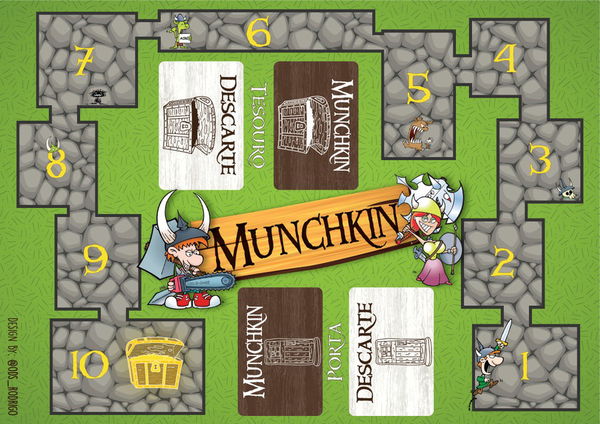
To level up is simple. As we talked about in the previous topic, when you win a battle, you will level up. But there are other ways to speed up this process. One is with a card that does exactly that action. Another way is to sell any number of items you have, and for that, you must look at the gold cost of each item and sell. For every thousand gold pieces, you can go up one level, however, to reach level 10, it must be through a battle.

Munchkin Gameplay
Finishing
This is Munchkin. It's an excellent game, where matches can take from 30 to 90 minutes. The basic game holds up to 6 players. But if you have more decks and more boxes, it is possible to increase this number.
The product has a good quality material, but it inspires care, as heavier hands tend to mark the cards, which are a little delicate, and the game's official shield is very difficult to find.
Play it, it's a lot of fun, and it's a good opportunity to relax with friends and family. It's a more comical form of RPG, bringing good laughs and stories to tell.
Thanks for reading and until the next game.

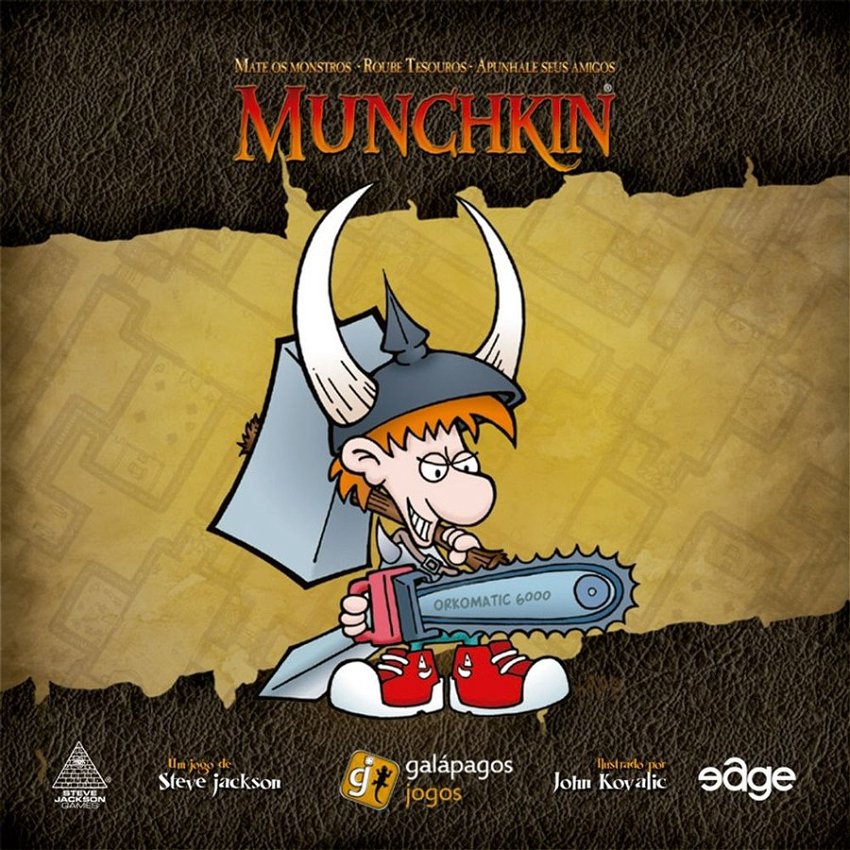




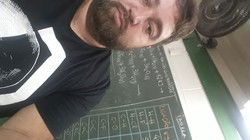


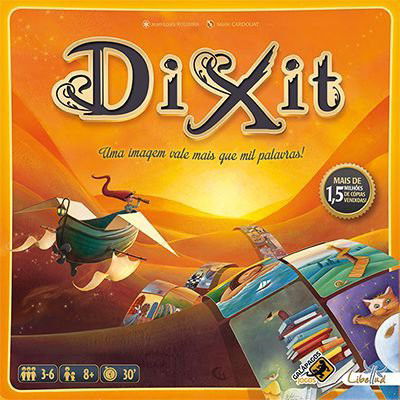
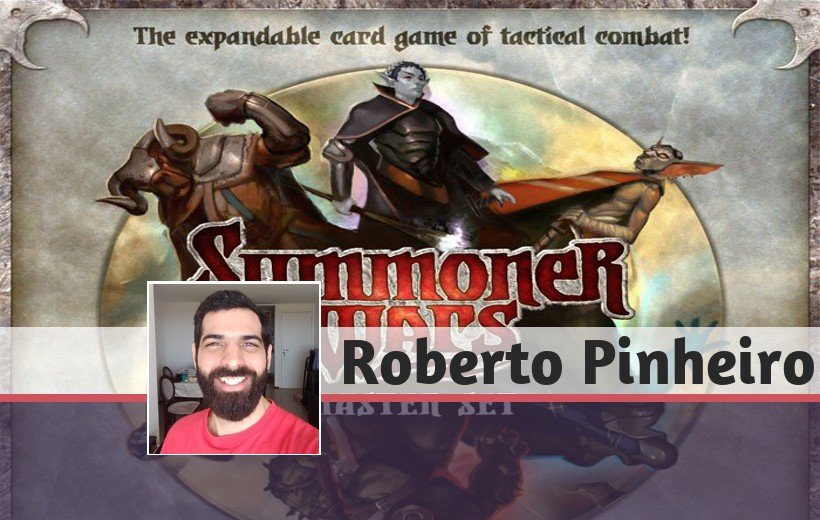

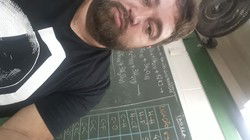

— Comments 0
, Reactions 1
Be the first to comment